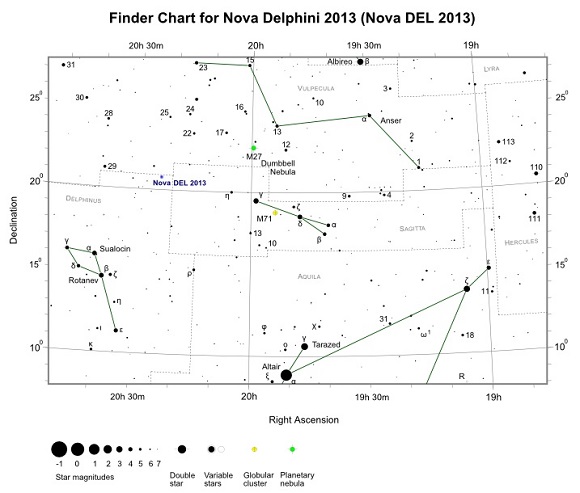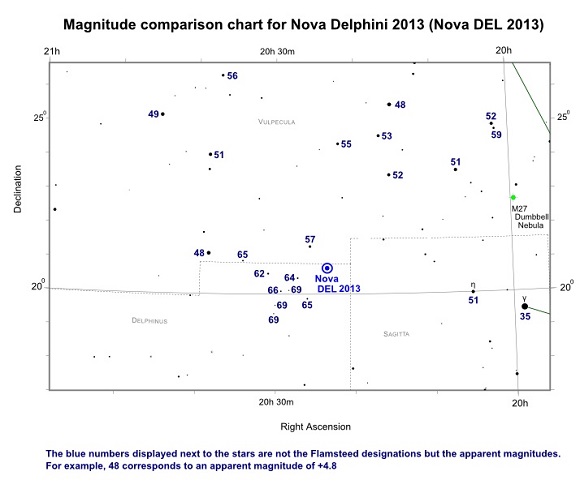From initial observations it appears that recently discovered Nova Delphini 2013 (Nova DEL 2013) is of the "slow nova" type, which suggests that it will hang around and subsequently remain visible to amateur astronomers for many months to come.
A "slow nova" by definition, requires at least 150 days or more to fade by 3 magnitudes. When this nova was discovered on August 14, 2013 it shone at magnitude +6.8; easily within binocular range. It then brightened quickly, peaking two days later at magnitude +4.3 before slowly starting to fall. As of August 21, the nova stands at magnitude +5.3, still a naked eye object and bright in binoculars.
Based on previous observations of other similar types of nova we could be in for an exciting ride over the next few months. It may even turn out that the initial peak magnitude, recorded just after discovery, may not be the final summit. Just when it looks like the star may fade away, it could suddenly burst into life again, shooting up magnitudes in brightness even months later. So keep watching!!

Finder Chart for Nova Delphini 2013 (Nova DEL 2013) - pdf format

Magnitude Comparison chart for Nova Delphini 2013 (Nova DEL 2013) - pdf format
The first finder chart shows the position of Nova Delphini 2013. The nova is visible towards the southeast (northern hemisphere) / northeast (southern hemisphere) as soon as it's dark enough. A marker star 29 Vul (mag. +4.8) lies 3.5 degrees east of the nova.
The second chart details the immediate region of sky surrounding the nova. In order to assist with brightness estimations, the numbers in blue adjacent to the stars are their corresponding magnitudes. For example, for 29 Vul, the value 48 corresponds to a magnitude of +4.8.
The co-ordinates of Nova Delphini 2013 are:- R.A. = 20h 23m 30.68s, Decl.= +20d 46m 03.7s (J2000)
See also
Bright Nova visible in Delphinus